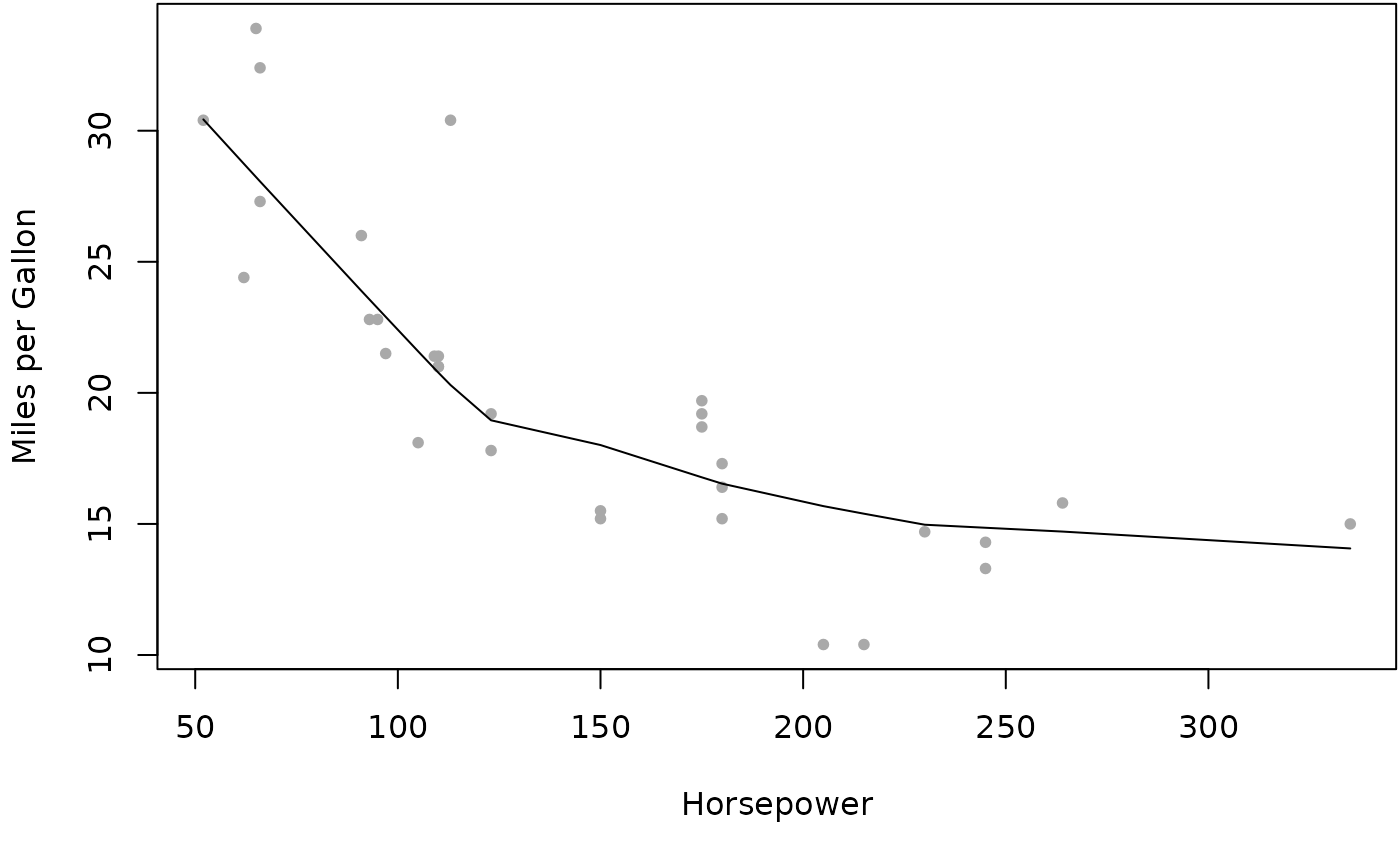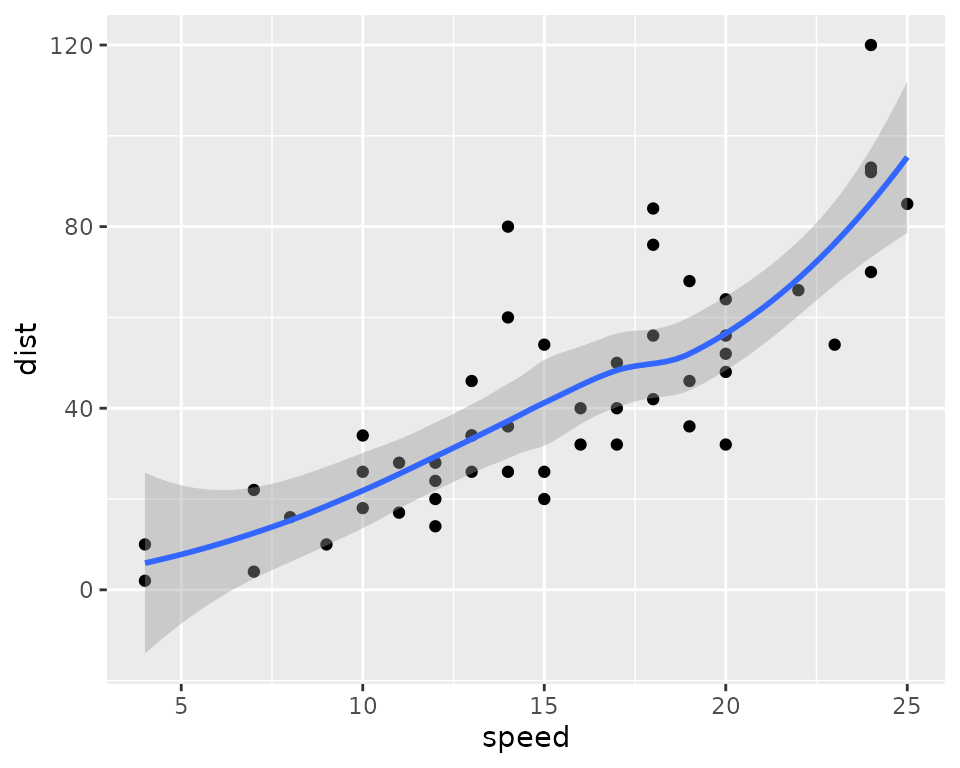
Chunks
Philippe Grosjean (phgrosjean@sciviews.org)
2020-04-16
Source:vignettes/test/chunks.Rmd
chunks.RmdThe R package {knitr} is used to insert R code withing your Markdown
document, which makes altogether an R Markdown document, usually with
the .Rmd extension. Go to {knitr} homepage for more details. This
document uses various chunks to see how they appears in a {pkgdown} site
with the {svPkgdown} style.
R chunks
- A few R commands:
# This is a comment (don't use ##, since it is reserved for output!)
a <- 1 + 1 # Another comment
TRUE; NA; "Some text"## [1] TRUE## [1] NA## [1] "Some text"
summary(cars) # A table## speed dist
## Min. : 4.0 Min. : 2.00
## 1st Qu.:12.0 1st Qu.: 26.00
## Median :15.0 Median : 36.00
## Mean :15.4 Mean : 42.98
## 3rd Qu.:19.0 3rd Qu.: 56.00
## Max. :25.0 Max. :120.00- Normal output versus message versus warning versus error:
# Normal output
cat("Some text...\n")## Some text...
# A message
message("My very nice message")## My very nice message
# Output with a warning
1:2 + 1:3## Warning in 1:2 + 1:3: longer object length is not a multiple of shorter object
## length## [1] 2 4 4
# An error
non_existing_object## Error: object 'non_existing_object' not found- R chunk with option to generate a plot:

An example figure generated by R, from the cars dataset.
- Another plot:
library(ggplot2)
qplot(speed, dist, data = cars) + geom_smooth(method = "loess")## Warning: `qplot()` was deprecated in ggplot2 3.4.0.
## This warning is displayed once every 8 hours.
## Call `lifecycle::last_lifecycle_warnings()` to see where this warning was
## generated.## `geom_smooth()` using formula = 'y ~ x'
Distance in function of speed for the cars data set.
Inline R expressions and special chunks
Inline R expression like 2, or R version 4.5.1 (2025-06-13).
Rcpp code chunks can also be included in your document:
#include <Rcpp.h>
// [[Rcpp::export]]
int fibonacci(const int x) {
if (x == 0 || x == 1) return(x);
return (fibonacci(x - 1)) + fibonacci(x - 2);
}Because fibonacci() was defined with the
Rcpp::export attribute it can now be called as a normal R
function:
fibonacci(10L)## [1] 55
fibonacci(20L)## [1] 6765- An R chunk that is displayed, but not executed:
